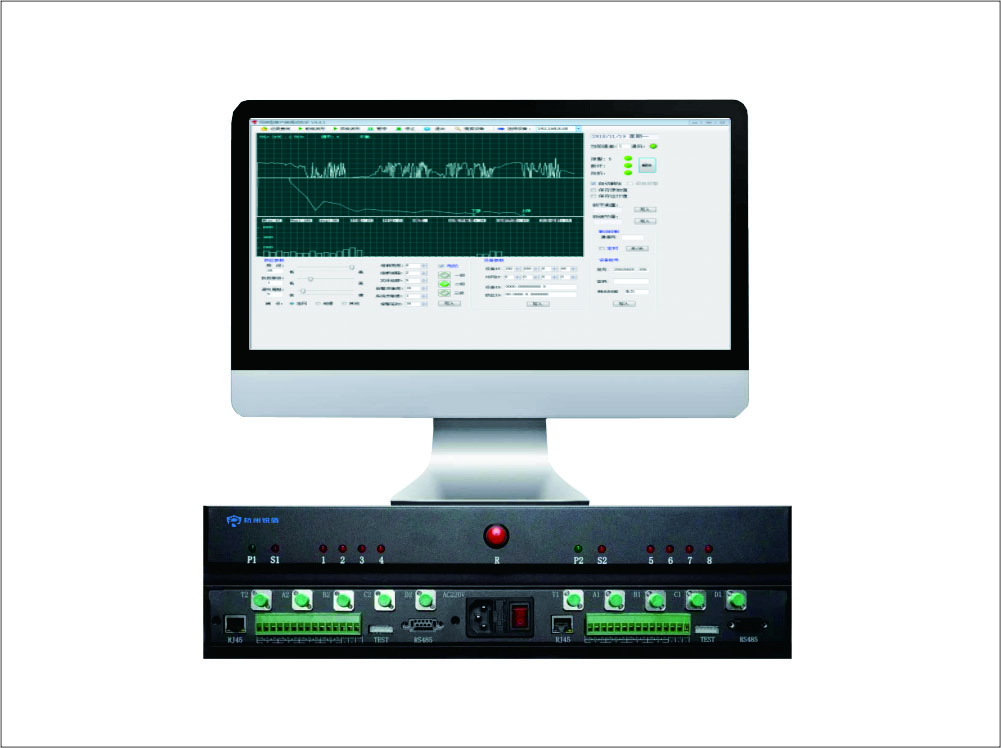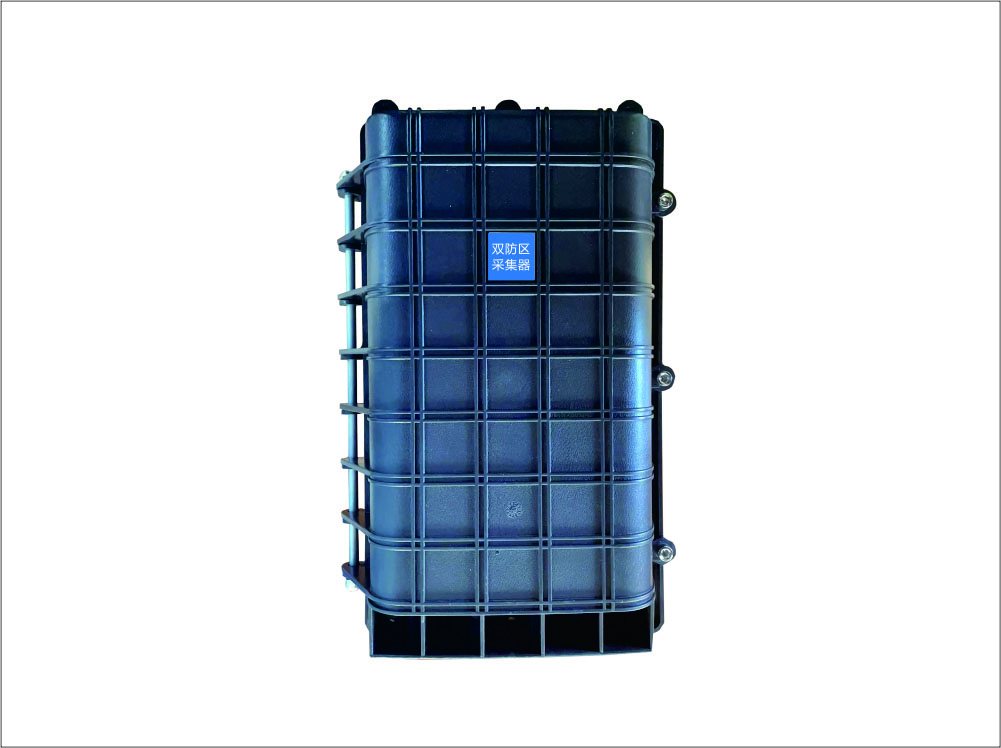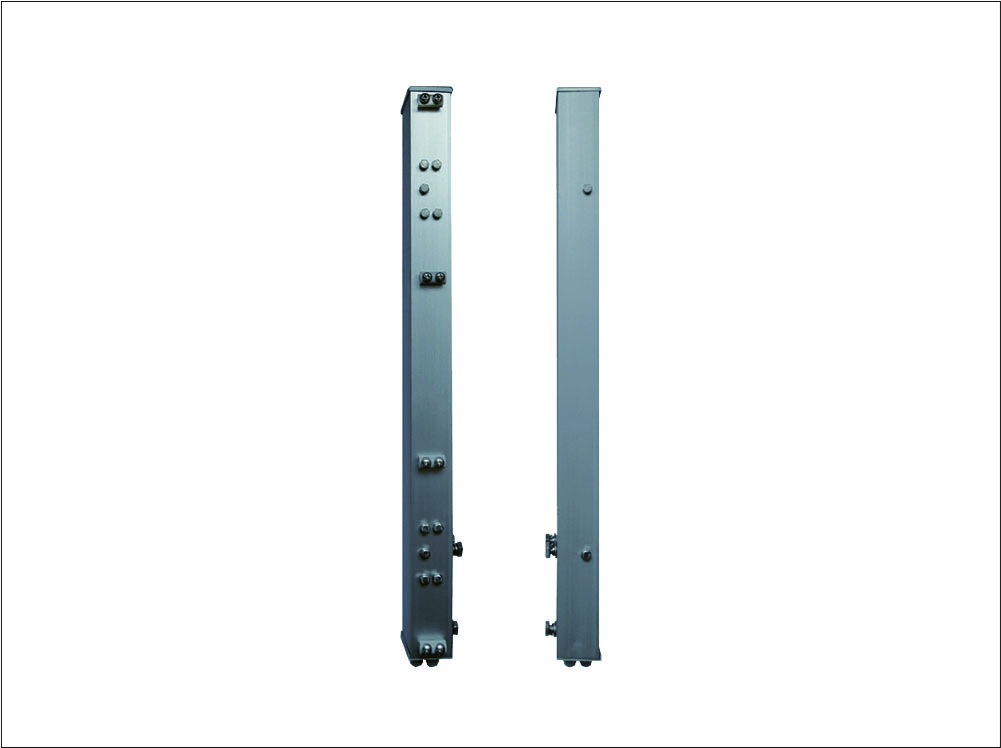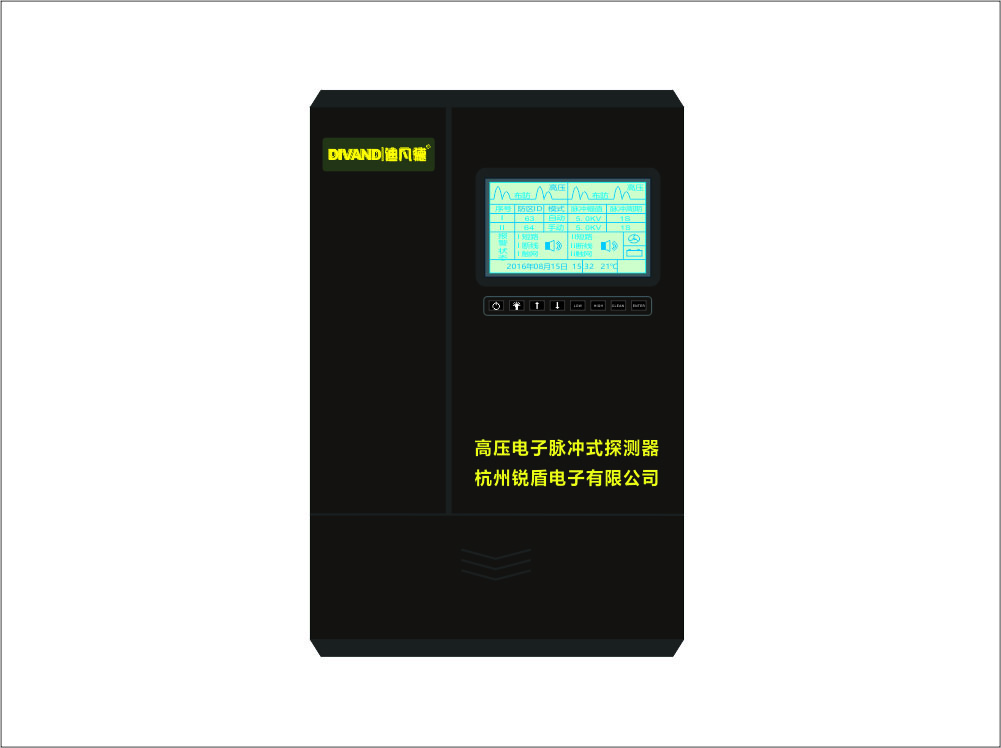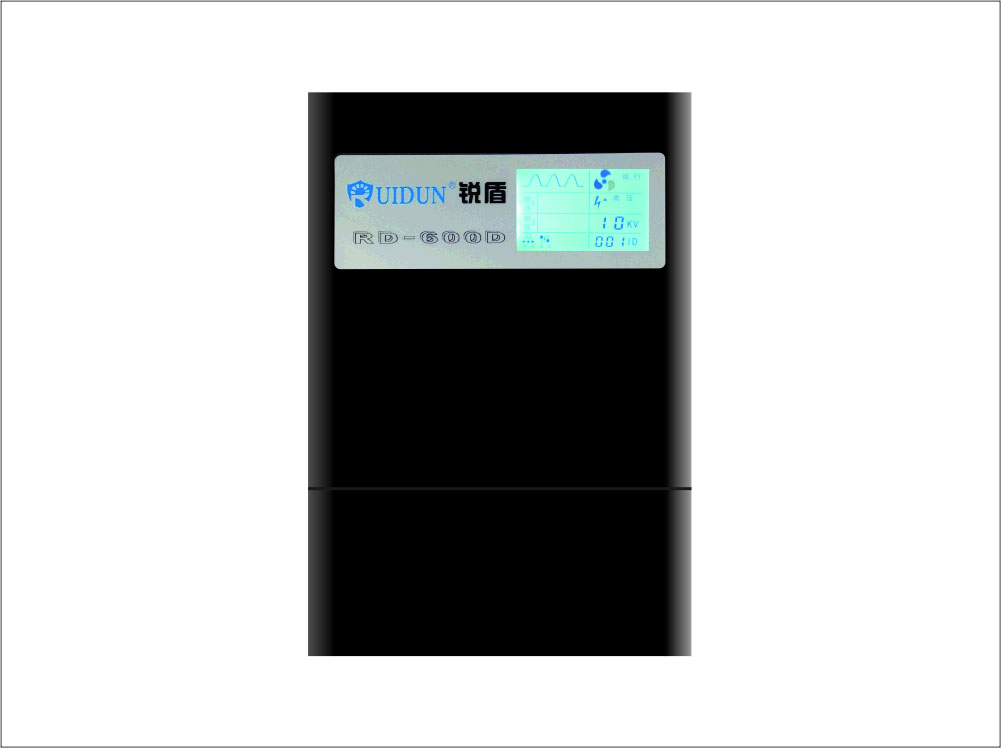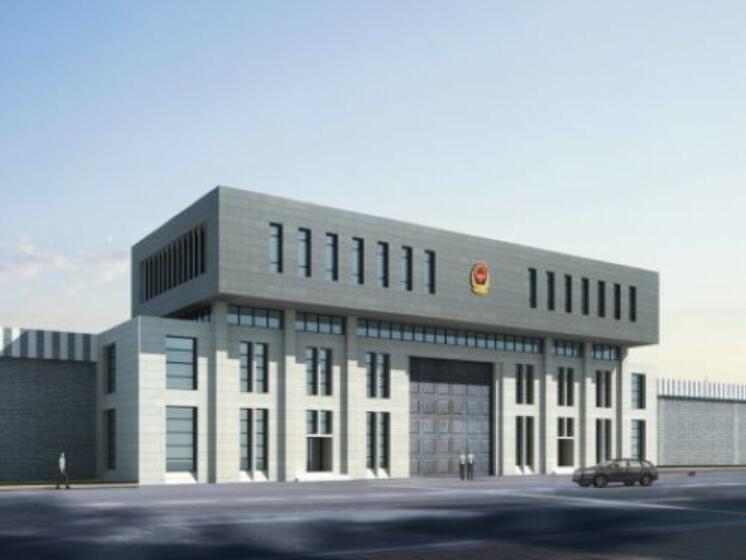Installation mode of wrought iron medium
1. Laying method of optical cable: When laying optical cable on wrought iron, as wrought iron is hard, the number of sensing optical cables should be increased to ensure that intrusion signals can be reliably sensed. By analyzing the action characteristics of intruders crossing the fence, it is suggested to lay a sensing optical cable along the top, middle and bottom horizontal iron railings of wrought iron, as shown in the figure.

In wrought iron fences, some wrought iron will be installed on pillars. If the area of the pillars is not large, you can directly cross the pillars when laying optical cables, as shown in the above figure. However, some pillars have large cross sections, which can be easily accessed by intruders, so such areas must be protected. An iron net can be installed at the top of the pillar, and when laying the optical cable, lay the sensing optical cable on the iron net, as shown in the figure.

2. Installation mode of collector:
The collector can be fixed on the wrought iron pillar. At a distance of about 1.5m from the ground, fix the junction box firmly on the medium with a clamp or binding tape. If there is a wide brick column between two wrought irons, the junction box can be fixed on the column and fixed with expansion bolts.
Installation mode of seine media
3. Laying method of optical cable:
When laying the optical cable on the barbed wire fence, the following methods can be selected according to the degree of softness of the laying medium
Straight line type:
This laying method can detect the invasion of climbing and climbing. Due to the straight-line laying method, less optical cables are needed, so it is suitable for places with low alert level. The sensing optical cable should be laid at about 3/4 of the height of the iron net, and laid in a horizontal straight line. The optical cable and the iron net grid should be tightly fixed with anti-ultraviolet tie or special binding tape every 40cm, as shown in the figure.

Parallel line type:
This laying method can detect invasion methods such as climbing, climbing, cutting nets, climbing assisted by ladders, etc. By laying multiple optical cables horizontally, the inductive area of the fence can be increased, thus effectively detecting weak intrusion signals, as shown in the figure. This method is suitable for places with high alert level. The sensing optical cable is laid along the top of the fence, and when it reaches the end of the defense zone, it is wound around and laid straight in the opposite direction. According to the demand, more roads can be laid back and forth, and the laying interval of optical cable can be evenly distributed according to the height of iron net.

4. Treatment of the reinforced part
The sensitivity of the sensing optical cable is consistent in the whole defense zone, but the tightness of the medium will change. Therefore, the influence of this factor should be considered when laying the sensing optical cable. The sensing area of the optical cable laid in the tight medium is larger than that of the optical cable laid in the loose medium. For example, when laying the optical cable in the column part of the iron net and the end part of the defense zone, it can be laid as shown in the figure, in which the laying method of Figure (B) is larger than that of Figure (A). Whether it is necessary to use this method to increase the sensitivity of the reinforced section should be determined by field test.

5. Installation mode of collector:
The collector can be fixed on the pillar or the iron net at the joint of the iron net, about 1.5 meters from the ground. In order to avoid false alarm caused by loose installation of the collector, a firm pillar or a tight iron net should be selected as the installation point. During installation, fastening clamps can be used for fixing, or binding wires can be used for binding and fixing, but no matter what method is adopted, the collector must be tightly and reliably fixed on the medium.
Installation mode of media
6. Laying method of optical cable:
There are two common ways to invade the fence: cutting the wall and climbing over it, and their prevention methods correspond to two solutions.
Guard against wall cutting:
Wall-sinking is a common intrusion method against the fence, and the sensing optical cable can collect the tiny vibration generated by the intruders when they dig the wall. Construction personnel can lay two optical cables on the wall in a parallel way. The height of the wall should not exceed 2m, and the optical cables should be fixed at 0.5m and 1.5m from the ground. If the height of the wall is greater than 2m, an optical cable should be added for every 1m increase in height, and the optical cable should be horizontally fixed in the middle of the area. In order to ensure that the sensing optical cable can sense the vibration generated when the wall is being cut, it is necessary to ensure that the wall surface is firm, the bricks can't loosen quickly, and the optical cable should be closely attached to the wall surface. Wire clips can be used to fix it every 50 cm. As shown in the figure

Guard against climbing over the fence:
If the intruder enters by climbing over, the vibration generated in this process is extremely weak, and the signal sensed by the sensing optical cable is not enough as the basis for judging the invasion. Therefore, to prevent this kind of invasion, it is necessary to install a buckle net, a rolling net or a vertical net on the wall to increase the vibration intensity and the sensing area. Generally, Φ3, 20cm X 5cm iron mesh is used as the buckle material, and the style is as shown in the figure. When fixing the sensing optical cable on the buckle net, attention should be paid to fixing the sensing optical cable on the top of the buckle net outside the fence. When the alert level needs to be raised, more optical cables can be laid, as shown in the figure.

Installation mode of buried medium
7. Installation of vibration sensing optical cable
The collector can collect the signals of the sensing optical cable buried under the surrounding surface media such as lawn, sand and gravel. When laying optical cables, multiple sensing optical cables can be laid in parallel along the perimeter. However, due to the different texture and hardness of different surface media, the laying intervals of sensing optical cables are different. The methods of laying sensing optical cables under different surface media are described below.
Grasslands: When the sensor optical cable is laid under the lawn, if the lawn has been laid in this area, the lawn in the perimeter area where the sensor optical cable needs to be laid should be scooped up with a lawn cutter. The width of the perimeter area should be no less than 1.2m. If the alert level needs to be raised, the width of the perimeter area can be increased. On the surface of the soil layer, a plurality of sensing optical cables are laid in parallel in a roundabout way along the perimeter direction, and the distance between the optical cables is 30cm, that is, 5 sensing optical cables should be laid in parallel in the 1.2m wide area, as shown in the figure. The sensing optical cable should be flat and tightly attached to the surface of the soil layer, and can be bent with φ 5 steel wire, as shown in the figure. The sensing optical cable should be pressed against the soil layer with the wire clamp every 50cm, but attention should be paid to avoid the deformation of the optical cable caused by excessive pressure. After fixing the optical cable, lay the lawn on it, and ensure that the joint of the lawn is tight to avoid the exposure of the sensing optical cable.

Sandy land: When the sensor optical cable is buried under sandy land, it is also laid in parallel. Because sandy land is soft, when intruders enter this area, they will exert pressure on the sensor optical cable through the sandy soil layer, and the sensor optical cable can detect tiny extrusion deformation and generate signals. Therefore, when the sensor optical cable is buried in sandy land, the distance between parallel sensor optical cables should be reduced, and the laying should not be too deep. Usually, the interval is 20 to 25cm, and the buried depth is 5 to 12cm, as shown in the figure. During construction, firstly, a groove with a width of 1.2m and a depth of 15cm is dug in the area where the sensing optical cable needs to be laid, and a layer of coarse sand with a thickness of 3cm is laid on the bottom of the groove, and then the sensing optical cable is laid on the coarse sand surface in parallel.
Surface, every 50cm with steel wire clip. After laying the sensing optical cable, cover it with a layer of coarse sand with a thickness of 10cm, and finally evenly cover its surface with a layer of 1cm surface medium (fine sand or loose and dry soil).

Gravel: When the sensing optical fiber is laid on the gravel ground, the parallel laying of multiple sensing optical fibers is also adopted. Generally, the interval between parallel laying of sensing optical cables is 25 to 30cm, and the buried depth is 5 to 15cm, as shown in the figure. During construction, first dig a groove with a width of 1.2m and a depth of 18cm in the area where the optical cable needs to be laid along the perimeter area, lay a layer of gravel with a thickness of 3cm at the bottom of the groove, then lay the sensing optical cable parallel to the gravel surface, and fix it with a steel wire clip every 50cm (the wire clip can avoid the gravel and be fixed on the bottom soil). After the optical cable is laid, it is covered with a layer of gravel with a thickness of 15cm. The gravel used must have no sharp edges, so as to avoid damage to the sensing fiber when the gravel is squeezed.

8. Installation of collector
The collector shell is made of engineering plastic, which has the characteristics of waterproof, anti-corrosion, pressure resistance and impact resistance. During engineering construction, the equipment can be directly buried in the ground, but in order to facilitate maintenance, equipment wells should be built to place and fix the equipment. The well should be sealed and have drainage function, so as to avoid long-term water infiltration into the inside of the equipment, or a sitting electric box can be built on the surface to fix the equipment, as shown in the figure.

Installation of buried collector
Installation of buried equipment (1)
When the equipment is buried, the collector and the optical cable adapter box should be installed in the underground well and the underground box respectively. During construction, the collector should be installed in the underground box, and the optical cable adapter box should be installed in the underground well (as shown in Figure 1).

The shell of optical cable adapter box is made of engineering plastic, which is waterproof, anticorrosive, pressure-resistant and impact-resistant. Hanging in the underground well. The well should be sealed and have drainage function, so as to avoid long-term water infiltration into the equipment.
The collector is an active device to be installed in the ground box, so it must be waterproof and anti-interference due to the high requirements of the collector. The cable adapter box of the collector is connected with the guide cable (as shown in Figure 1). The guide cable is a common communication single-mode outdoor cable, which has become a non-inductive cable because of its special optical path structure. That is, the vibration generated in the area where the guiding optical cable is laid will not be detected, and the guiding optical cable is also called a non-inductive optical cable. The periphery of the optical cable must be protected by pvc pipe (the model is required by the site), and the corner or joint can be sealed with pvc dry glue.
Installation of buried equipment (II)
If the underground well has a good drainage function, it can ensure that the accumulated water will not seep into it, and the collector can be directly hung in the underground well (as shown in Figure 2), so there is no need to relocate the ground box and the optical cable adapter box.

